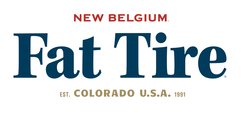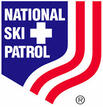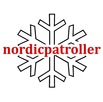Smartphone Avalanche Search Apps—A Review
James Floyer, PhD Senior Forecaster: Canadian Avalanche Centre Discussion paper: October, 2013
Introduction
Smartphones are popular—in Canada, around 56% of people use one1. Recently, apps have appeared on the market designed to allow one smartphone to search for another in avalanche rescue scenarios. In this way, users are given avalanche victim search functionality on their handheld device. There are currently three apps available: iSis Intelligent (Mountain) Rescue System; Snøg Avalanche Buddy; and SnoWhere. The iSis and Snøg apps are available for iPhone only. SnoWhere is an Android only app. Such apps are referred to as smartphone avalanche search apps.
This paper presents a technical discussion of the operation and limitations of these devices. The suitability of this technology is analysed from a public safety point of view. Existing literature was reviewed and app developers were contacted to provide detail on how their systems work as well as test results2. Technical and rescue experts were consulted for specific advice. No field testing was carried out as part of this review, and details of how the systems work are gleaned in part through marketing literature, including videos posted on developers’ websites, and in part through theoretical considerations. Note also, at the time of preparation, no independent tests or reviews were available.
How they work
Smartphone avalanche search apps make use of various two‐way communication technologies including: cell network; WiFi; and Bluetooth. Additionally, two of the apps make use of GPS signals. Each app uses a slightly different set of technologies to communicate its location to another smartphone, which must also have the identical app installed. Table 1 lists the technologies the different apps make use of.
When searching using WiFi or Bluetooth signals, a smartphone app permits searches in a similar way to an older‐style analogue avalanche transceiver. Signal strength may be displayed as a number (SnoWhere) or on a bar chart (Snøg), with an increase in signal strength indicating increasing proximity to the victim. Signal direction is poorly resolved, as smartphones only have one antenna (per communication technology), and the orientation of that antenna may not be known to the user.
The SnoWhere and iSis apps use GPS to aid search location. The location of the victim shows up on a basemap, allowing the searcher to use mapping functions to guide them towards the victim.
Two apps also include functionality that notifies other rescuers of an avalanche incident either automatically (iSis) or manually (SnoWhere). These features could be useful within the broader context of search and rescue, including avalanche search and rescue. However, since this paper focuses on the victim search functionality of smartphone avalanche search apps, these features are not considered further here.
1 Google Report: Our Mobile Planet – Understanding the Mobile Consumer. Ipsos MediaCT. May 2013. 2 Two of the three app developers: Piranha Stuff BV (Snøg’s developers) and Charcoal Frost Ltd (SnoWhere’s developers) responded to our enquiries.
Table 1: Summary of search and communication technologies employed by three avalanche search apps.
Range issues
WiFi and Bluetooth signals are strongly affected by transmission through water‐based mediums, including snow. Therefore, signal strength is reduced when the transmitting device is buried in an avalanche; this effect is amplified if the debris is dense and moist—often the case for all but the smallest avalanches. Signal strength is also affected by the presence of trees, rocks or the victim’s own body lying over the top of their phone.
In their marketing materials, developers report ranges of between 40 and 50 m for WiFi/Bluetooth searches. These ranges likely reflect best case scenarios for relatively shallow burials, or devices placed on the surface of the snow. Snøg Avalanche Buddy developers have reported that forested terrain presents difficulties for WiFi transmission. Effective range was reduced to around 12 m during their tests in forested terrain. While independent tests have not been carried out, similar range reductions might be expected for deep burials in avalanche debris, and/or when the device is shielded by a victim’s body. Similar range reductions are expected for Bluetooth signals.
GPS accuracy is insufficient for precise victim location. SnoWhere developers claim a “best reported accuracy” of 5 m with an iPhone 4/5. Accuracy values of 7.5 to 15 m are probably more realistic for devices buried under 2 m of snow, since GPS performance degrades rapidly with burial depth3. Searchers will still have to switch to WiFi/Bluetooth signal search mode for the fine search phase. If the GPS is not already switched on and tracking (which requires considerable battery power), it may take some time to acquire a signal when buried, if it is able to do so at all.
GPS technology offers, at best, a coarse search feature to bring the searcher to within approximately 10 m of the victim. At worst, if a GPS location were incorrect, searchers could actually be led away from the victim, believing they were moving closer towards them.
Compatibility
International standards4 dictate avalanche transceivers transmit and receive at a frequency of 457 kHz. Regardless of brand, all current avalanche transceivers are compatible with each other. Compatibility
3 Schleppe, J. and Lachapelle, G. GPS Tracking Performance under Deposited Snow. ION GNSS, Sept. 2006. 4 ETSI EN 300 718‐1 V1.2.1. Electromagnetic compatibility and Radio spectrum Matters (ERM); Avalanche Beacons; Transmitter‐receiver systems; Part 1: Technical characteristics and test methods. European Standard (Telecommunications series). May 2001.
(iPhone 4/5)
GPS location sent by WiFi or cell internet connection (1000 m claimed) or direct via Bluetooth (45 m claimed)
Micro‐grid search using Bluetooth
Automatic (using trajectory analysis) alert from victim or manual alert from rescuer
Snøg
(Android)
WiFi signal strength analysis (50 m claimed)
Same as primary
None
SnoWhere
(iPhone 3/4/5)
GPS location sent by Bluetooth (40 m claimed for iPhone 3, 45 m for iPhone 4 and 5)
Map‐assisted Bluetooth signal strength analysis
Rescuer can share location using email or SMS
between transceivers is a fundamental tenet of avalanche rescue; even older analogue transceivers5 operate on the 457 kHz frequency and are compatible with more recent digital models6.
In contrast, smartphones do not transmit at 457 kHz and therefore do not (and cannot) adhere to international transceiver standards, regardless of what software is installed. They are not compatible with 457 kHz avalanche transceivers.
Further, smartphone avalanche search apps are not compatible with each other. This means all members of a backcountry party must use the same smartphone platform with the same software installed to have a useable rescue system. This creates heightened potential for someone to assume they have a compatible smartphone device, while in actual fact they have a different and incompatible device to the ones used by their companions. This incompatibility with existing avalanche transceivers and lack of inter‐ compatibility between the apps makes these applications, at their current level of development, particularly inadequate from an avalanche rescue perspective.
Battery life
Battery life is another critical limitation with the current state of smartphone technology. International standards for avalanche transceivers dictate that devices should be able to transmit for 200 hours at +10°C and then still have enough power to search for 1 hour at ‐10°C. Many smartphone batteries do not last for a full day of use on one charge, especially when power intensive features, such as GPS location, Bluetooth or WiFi communication modes are employed. Battery drain is higher in areas with no cell coverage, as phones constantly seek a signal. The effect of the cold further reduces battery life. Many phones (including iPhone models) do not have user‐replaceable batteries.
SAR groups report rescue victims frequently have trouble communicating with rescuers at the end of the day as their smartphones run out of battery power. AdventureSmart, Canada’s national SAR prevention program, recommends users switch their phones off to conserve battery power in case of emergency situations. Users of smartphone avalanche search apps potentially face an unacceptable choice: switch their phone off to conserve battery power for communication but disable their avalanche safety device, or maintain power to their avalanche safety device but run the risk of not having effective communication for emergency rescue use.
Robustness, reliability and ease of use
International avalanche transceiver standards include stringent drop and immersion tests that must be passed before any device comes to market. Additionally, devices must include a carrying system designed to guard against being ripped off during an avalanche. While some smartphone models are reasonably robust, many are not, and may be susceptible to water ingress or shock. While smartphone operating systems are generally good, software crashes do occur, sometimes requiring a reboot; these may be caused by other installed software and not necessarily the avalanche search app itself. If this were to happen during a rescue, valuable search time would be lost. Phones are not supplied with a carrying
5 457 kHz was adopted by the International Commission for Alpine Rescue (IKAR) in 1986. Some models manufactured before that date operated at 2.275 kHz and are not compatible with 457 kHz transceivers. 6 The Canadian Avalanche Centre recommends the exclusive use of 3‐antenna digital transceivers (with no brand preference), due to their increased performance in a range of burial scenarios.
system, increasing the possibility of the device becoming detached from the victim during an avalanche, or dropped in the snow during a search.
Most smartphones rely on touch screens, which are not operable wearing thick gloves or mittens and may not work effectively if the screen is covered with snow or water. The large size of screens creates vulnerability, as they might be easily cracked. To their credit, app developers appear to have favoured relatively simple interfaces for their software; however, it may still be necessary to navigate a menu system, or turn additional software or phone features off to properly operate the avalanche search app. There is the possibility for distraction from an incoming call, email or text during a search, which might be less easily ignored if the smartphone is in use in the rescuer’s hand rather than stashed away in a pocket or backpack.
Interference
Recent studies7,8 have analysed the effects of interference on avalanche transceiver performance for a range of devices including cell phones. Based on these studies, the Canadian Avalanche Centre recommends the following separation distances between an avalanche transceiver and other electronic devices:
Transmit mode (Send): 20 cm Search mode (Receive): 50 cm
It is not known for certain whether dedicated avalanche transceivers would experience additional problems if used in proximity to smartphones running avalanche search apps. However, since WiFi/Bluetooth frequencies (~2.4 GHz) are quite different from the 457 kHz frequency, the risk of additional interference from the proximal use of these apps is probably low. (Note: as previously stated, smartphone avalanche search apps are NOT compatible with 457 kHz transceivers. The discussion here is whether the incidental use of such an app would have an impact on a search between two or more dedicated 457 kHz transceivers.)
Interference between Bluetooth and WiFi signals has been documented and occurs because the operating frequencies are close together. This should not pose a problem if only one communication technology is used at any one time and the other transmitting mode is switched off. However, other installed apps, or features activated by the user may turn WiFi or Bluetooth signals on, increasing the possibility of interference. Other possible sources of interference are receiving a cell phone call and using the GPS receiver and other Bluetooth‐enabled electronic devices carried by users, such as cameras, headphones etc.—the effect of these on smartphone search app performance is currently unknown.
Marketing
Avalanche search apps are being actively marketed as software that turns a smartphone into an avalanche transceiver. None of the developers claim the software/phone combination will adhere to international transceiver standards. In fact, at least two developers have specific disclaimers that tell the user the system is not certified and does not meet international standards for avalanche transceivers. Despite the
7 Barkhausen, J. The Effect of External Interference on Avalanche Transceiver Functionality. In Proceedings International Snow Science Workshop (ISSW 2012). Anchorage, AK, USA, Sept. 2012. 8 Genswein, M., Atkins, D., Obad, J., Grady, E., Piche, M., Guyn, T., Whelan, R. and Brattlien, K. Recommendation on how avoid Interference Issues in Companion and Organized Avalanche Rescue. 2013.
disclaimers, the marketing intentions are quite clear from text, videos and discussions on developer’s web pages, Facebook accounts, and other communications: these apps are being touted specifically for use in finding buried victims in the event of an avalanche.
One marketing statement from the Google Play store about the Snøg Avalanche Buddy states: “Snøg is a ‘missing person tracker’ tool. A tool designed to quickly locate and find a victim, buried under an avalanche.” SnoWhere developers include this personal avalanche connection statement: “20 years ago our founder was buried in an avalanche within bounds in poor visibility. He only survived because he was quickly discovered by a passing boy who thought he had found a hat. That experience inspired SnoWhere: to help ensure no‐one else’s survival relies on luck.” iSis developers are probably the most aggressive in pitching their app as a dedicated avalanche rescue system, and include a professionally edited video9 containing a mock avalanche incident with a group of skiers who have apparently left the confines of the resort. The incident is complete with images of a skier triggering an avalanche and being buried by snow, before his companions use their phone with the iSis app to rescue the victim.
Legal and ethical issues
While it is clear that avalanche search apps are being actively marketed as software that enables smartphones to be used as avalanche search devices, the legal status of marketing/selling an app that turns an otherwise compliant smartphone into an avalanche search device that does not meet international standards is unclear. Additionally, it is not a simple matter to establish whether international standards for avalanche transceivers are binding or voluntary in the Canadian context. Specific legal advice would be required to establish these points in Canada.
Regardless of legal state, developers do have an ethical obligation to ensure products they bring to market do not have a negative impact on public safety. For a lifesaving device with mission‐critical operating parameters that relies on successful communication with other similar devices, independent testing in real‐world scenarios is imperative. None has been made available to us, and to our knowledge none has yet been carried out. The numerous and serious flaws in the current state of smartphone avalanche search app technology give justifiable cause for concern that public safety may be compromised by the introduction of this kind of avalanche rescue device.
Conclusion and discussion
The CAC does not consider any of the existing apps discussed here to be viable devices for avalanche companion rescue. There are serious concerns and vulnerabilities with a range of important aspects of the technology. The most critical of these are:
lack of compatibility with existing avalanche transceivers lack of compatibility between different operating systems and software brands smartphone battery life range concerns in real‐world scenarios (i.e. when buried in avalanche debris)
Additional concerns are: system robustness; smartphone reliability; ease of use; interference issues; and the possibility of distraction during a search.
9 http://www.youtube.com/watch?v=qpqnszYXdmg&feature=player_embedded
There are good reasons for having in place international standards for avalanche transceivers. Of course, standards may change and evolve with time to reflect new technologies. But this must be done in a transparent, collaborative manner that maintains at its core the best interests of public safety. Present development of smartphone avalanche rescue apps appears haphazard, is unregulated, and is potentially dangerous to end users, who may confuse this technology with legitimate avalanche transceivers. The option to spend only a few dollars on a cheap app in place of spending several hundreds of dollars on a dedicated avalanche transceiver may be tempting to many, particularly novice users. However, the choice to use such an app as a safety device when entering avalanche terrain could imperil all members of the user’s backcountry group.
Some may argue that the ubiquity of smartphone devices might make up for the shortfall in performance of avalanche search apps. Under this pretext, the likelihood of an avalanche victim being without any form of avalanche rescue device is lower, which compensates for any reduced search performance. This argument is invalid for the following reasons.
First, the critical issues of cross‐compatibility, inter‐compatibility, poor battery life and range under avalanche debris preclude any kind of benefit from smartphone ubiquity.
Second, apps must be manually installed and activated, so smartphone ubiquity does not equate to a ubiquity of avalanche search devices.
Third, on account of the urgency of avalanche companion rescue with target rescue times (i.e. the combination of searching, pinpoint location using a probe and extrication by digging) of 10 minutes or less10, substandard avalanche search devices are likely to have a considerable negative impact on victim mortality.
Fourth, there is potential for a significant negative impact on users of dedicated avalanche transceivers by the presence of smartphone avalanche search app technology: that is the possibility for people who would have otherwise purchased (or borrowed or rented) a dedicated avalanche transceiver to be tempted to download an app onto their smartphone instead. These people may not be aware their smartphone search app is not compatible with other group member’s dedicated avalanche transceivers, so putting themselves and their companions at risk.
Recommendations
In light of the deficiencies of current smartphone avalanche search app technology, the Canadian Avalanche Centre is implementing the following strategies:
1. Maintain the prevailing culture of using dedicated 457 kHz avalanche transceivers during winter backcountry recreation by continuing to promote the Canadian Avalanche Centre’s and other partners’ existing awareness campaigns that recommend the use of dedicated avalanche transceivers, probes and shovels for all group members.
2. Discourage the adoption of smartphone avalanche search app technology in place of dedicated 457 kHz transceivers. This might take the form of targeted education campaigns directed at specific user groups. Campaigns should highlight the benefits to users of dedicated 457 kHz transceivers over smartphone avalanche search apps.
10 Haegeli, P., Falk, M., Brugger, H., Etter, H‐J. Comparison of avalanche survival patterns in Canada and Switzerland. Canadian Medical Association Journal. doi: 10.1503/cmaj.101435. Mar. 2011.
3. Respond to media and public enquiries regarding this new technology, including being prepared to respond in the event of an incident involving avalanche search apps, either in Canada or elsewhere.
4. Advocate that new avalanche search technologies, especially those that deviate from agreed‐ upon international standards, be developed collaboratively, thoroughly and with transparency. Developers must be reminded of their ethical obligation to ensure full and independent testing of their rescue systems prior to going to market.
James Floyer, PhD Senior Forecaster: Canadian Avalanche Centre Discussion paper: October, 2013
Introduction
Smartphones are popular—in Canada, around 56% of people use one1. Recently, apps have appeared on the market designed to allow one smartphone to search for another in avalanche rescue scenarios. In this way, users are given avalanche victim search functionality on their handheld device. There are currently three apps available: iSis Intelligent (Mountain) Rescue System; Snøg Avalanche Buddy; and SnoWhere. The iSis and Snøg apps are available for iPhone only. SnoWhere is an Android only app. Such apps are referred to as smartphone avalanche search apps.
This paper presents a technical discussion of the operation and limitations of these devices. The suitability of this technology is analysed from a public safety point of view. Existing literature was reviewed and app developers were contacted to provide detail on how their systems work as well as test results2. Technical and rescue experts were consulted for specific advice. No field testing was carried out as part of this review, and details of how the systems work are gleaned in part through marketing literature, including videos posted on developers’ websites, and in part through theoretical considerations. Note also, at the time of preparation, no independent tests or reviews were available.
How they work
Smartphone avalanche search apps make use of various two‐way communication technologies including: cell network; WiFi; and Bluetooth. Additionally, two of the apps make use of GPS signals. Each app uses a slightly different set of technologies to communicate its location to another smartphone, which must also have the identical app installed. Table 1 lists the technologies the different apps make use of.
When searching using WiFi or Bluetooth signals, a smartphone app permits searches in a similar way to an older‐style analogue avalanche transceiver. Signal strength may be displayed as a number (SnoWhere) or on a bar chart (Snøg), with an increase in signal strength indicating increasing proximity to the victim. Signal direction is poorly resolved, as smartphones only have one antenna (per communication technology), and the orientation of that antenna may not be known to the user.
The SnoWhere and iSis apps use GPS to aid search location. The location of the victim shows up on a basemap, allowing the searcher to use mapping functions to guide them towards the victim.
Two apps also include functionality that notifies other rescuers of an avalanche incident either automatically (iSis) or manually (SnoWhere). These features could be useful within the broader context of search and rescue, including avalanche search and rescue. However, since this paper focuses on the victim search functionality of smartphone avalanche search apps, these features are not considered further here.
1 Google Report: Our Mobile Planet – Understanding the Mobile Consumer. Ipsos MediaCT. May 2013. 2 Two of the three app developers: Piranha Stuff BV (Snøg’s developers) and Charcoal Frost Ltd (SnoWhere’s developers) responded to our enquiries.
Table 1: Summary of search and communication technologies employed by three avalanche search apps.
Range issues
WiFi and Bluetooth signals are strongly affected by transmission through water‐based mediums, including snow. Therefore, signal strength is reduced when the transmitting device is buried in an avalanche; this effect is amplified if the debris is dense and moist—often the case for all but the smallest avalanches. Signal strength is also affected by the presence of trees, rocks or the victim’s own body lying over the top of their phone.
In their marketing materials, developers report ranges of between 40 and 50 m for WiFi/Bluetooth searches. These ranges likely reflect best case scenarios for relatively shallow burials, or devices placed on the surface of the snow. Snøg Avalanche Buddy developers have reported that forested terrain presents difficulties for WiFi transmission. Effective range was reduced to around 12 m during their tests in forested terrain. While independent tests have not been carried out, similar range reductions might be expected for deep burials in avalanche debris, and/or when the device is shielded by a victim’s body. Similar range reductions are expected for Bluetooth signals.
GPS accuracy is insufficient for precise victim location. SnoWhere developers claim a “best reported accuracy” of 5 m with an iPhone 4/5. Accuracy values of 7.5 to 15 m are probably more realistic for devices buried under 2 m of snow, since GPS performance degrades rapidly with burial depth3. Searchers will still have to switch to WiFi/Bluetooth signal search mode for the fine search phase. If the GPS is not already switched on and tracking (which requires considerable battery power), it may take some time to acquire a signal when buried, if it is able to do so at all.
GPS technology offers, at best, a coarse search feature to bring the searcher to within approximately 10 m of the victim. At worst, if a GPS location were incorrect, searchers could actually be led away from the victim, believing they were moving closer towards them.
Compatibility
International standards4 dictate avalanche transceivers transmit and receive at a frequency of 457 kHz. Regardless of brand, all current avalanche transceivers are compatible with each other. Compatibility
3 Schleppe, J. and Lachapelle, G. GPS Tracking Performance under Deposited Snow. ION GNSS, Sept. 2006. 4 ETSI EN 300 718‐1 V1.2.1. Electromagnetic compatibility and Radio spectrum Matters (ERM); Avalanche Beacons; Transmitter‐receiver systems; Part 1: Technical characteristics and test methods. European Standard (Telecommunications series). May 2001.
(iPhone 4/5)
GPS location sent by WiFi or cell internet connection (1000 m claimed) or direct via Bluetooth (45 m claimed)
Micro‐grid search using Bluetooth
Automatic (using trajectory analysis) alert from victim or manual alert from rescuer
Snøg
(Android)
WiFi signal strength analysis (50 m claimed)
Same as primary
None
SnoWhere
(iPhone 3/4/5)
GPS location sent by Bluetooth (40 m claimed for iPhone 3, 45 m for iPhone 4 and 5)
Map‐assisted Bluetooth signal strength analysis
Rescuer can share location using email or SMS
between transceivers is a fundamental tenet of avalanche rescue; even older analogue transceivers5 operate on the 457 kHz frequency and are compatible with more recent digital models6.
In contrast, smartphones do not transmit at 457 kHz and therefore do not (and cannot) adhere to international transceiver standards, regardless of what software is installed. They are not compatible with 457 kHz avalanche transceivers.
Further, smartphone avalanche search apps are not compatible with each other. This means all members of a backcountry party must use the same smartphone platform with the same software installed to have a useable rescue system. This creates heightened potential for someone to assume they have a compatible smartphone device, while in actual fact they have a different and incompatible device to the ones used by their companions. This incompatibility with existing avalanche transceivers and lack of inter‐ compatibility between the apps makes these applications, at their current level of development, particularly inadequate from an avalanche rescue perspective.
Battery life
Battery life is another critical limitation with the current state of smartphone technology. International standards for avalanche transceivers dictate that devices should be able to transmit for 200 hours at +10°C and then still have enough power to search for 1 hour at ‐10°C. Many smartphone batteries do not last for a full day of use on one charge, especially when power intensive features, such as GPS location, Bluetooth or WiFi communication modes are employed. Battery drain is higher in areas with no cell coverage, as phones constantly seek a signal. The effect of the cold further reduces battery life. Many phones (including iPhone models) do not have user‐replaceable batteries.
SAR groups report rescue victims frequently have trouble communicating with rescuers at the end of the day as their smartphones run out of battery power. AdventureSmart, Canada’s national SAR prevention program, recommends users switch their phones off to conserve battery power in case of emergency situations. Users of smartphone avalanche search apps potentially face an unacceptable choice: switch their phone off to conserve battery power for communication but disable their avalanche safety device, or maintain power to their avalanche safety device but run the risk of not having effective communication for emergency rescue use.
Robustness, reliability and ease of use
International avalanche transceiver standards include stringent drop and immersion tests that must be passed before any device comes to market. Additionally, devices must include a carrying system designed to guard against being ripped off during an avalanche. While some smartphone models are reasonably robust, many are not, and may be susceptible to water ingress or shock. While smartphone operating systems are generally good, software crashes do occur, sometimes requiring a reboot; these may be caused by other installed software and not necessarily the avalanche search app itself. If this were to happen during a rescue, valuable search time would be lost. Phones are not supplied with a carrying
5 457 kHz was adopted by the International Commission for Alpine Rescue (IKAR) in 1986. Some models manufactured before that date operated at 2.275 kHz and are not compatible with 457 kHz transceivers. 6 The Canadian Avalanche Centre recommends the exclusive use of 3‐antenna digital transceivers (with no brand preference), due to their increased performance in a range of burial scenarios.
system, increasing the possibility of the device becoming detached from the victim during an avalanche, or dropped in the snow during a search.
Most smartphones rely on touch screens, which are not operable wearing thick gloves or mittens and may not work effectively if the screen is covered with snow or water. The large size of screens creates vulnerability, as they might be easily cracked. To their credit, app developers appear to have favoured relatively simple interfaces for their software; however, it may still be necessary to navigate a menu system, or turn additional software or phone features off to properly operate the avalanche search app. There is the possibility for distraction from an incoming call, email or text during a search, which might be less easily ignored if the smartphone is in use in the rescuer’s hand rather than stashed away in a pocket or backpack.
Interference
Recent studies7,8 have analysed the effects of interference on avalanche transceiver performance for a range of devices including cell phones. Based on these studies, the Canadian Avalanche Centre recommends the following separation distances between an avalanche transceiver and other electronic devices:
Transmit mode (Send): 20 cm Search mode (Receive): 50 cm
It is not known for certain whether dedicated avalanche transceivers would experience additional problems if used in proximity to smartphones running avalanche search apps. However, since WiFi/Bluetooth frequencies (~2.4 GHz) are quite different from the 457 kHz frequency, the risk of additional interference from the proximal use of these apps is probably low. (Note: as previously stated, smartphone avalanche search apps are NOT compatible with 457 kHz transceivers. The discussion here is whether the incidental use of such an app would have an impact on a search between two or more dedicated 457 kHz transceivers.)
Interference between Bluetooth and WiFi signals has been documented and occurs because the operating frequencies are close together. This should not pose a problem if only one communication technology is used at any one time and the other transmitting mode is switched off. However, other installed apps, or features activated by the user may turn WiFi or Bluetooth signals on, increasing the possibility of interference. Other possible sources of interference are receiving a cell phone call and using the GPS receiver and other Bluetooth‐enabled electronic devices carried by users, such as cameras, headphones etc.—the effect of these on smartphone search app performance is currently unknown.
Marketing
Avalanche search apps are being actively marketed as software that turns a smartphone into an avalanche transceiver. None of the developers claim the software/phone combination will adhere to international transceiver standards. In fact, at least two developers have specific disclaimers that tell the user the system is not certified and does not meet international standards for avalanche transceivers. Despite the
7 Barkhausen, J. The Effect of External Interference on Avalanche Transceiver Functionality. In Proceedings International Snow Science Workshop (ISSW 2012). Anchorage, AK, USA, Sept. 2012. 8 Genswein, M., Atkins, D., Obad, J., Grady, E., Piche, M., Guyn, T., Whelan, R. and Brattlien, K. Recommendation on how avoid Interference Issues in Companion and Organized Avalanche Rescue. 2013.
disclaimers, the marketing intentions are quite clear from text, videos and discussions on developer’s web pages, Facebook accounts, and other communications: these apps are being touted specifically for use in finding buried victims in the event of an avalanche.
One marketing statement from the Google Play store about the Snøg Avalanche Buddy states: “Snøg is a ‘missing person tracker’ tool. A tool designed to quickly locate and find a victim, buried under an avalanche.” SnoWhere developers include this personal avalanche connection statement: “20 years ago our founder was buried in an avalanche within bounds in poor visibility. He only survived because he was quickly discovered by a passing boy who thought he had found a hat. That experience inspired SnoWhere: to help ensure no‐one else’s survival relies on luck.” iSis developers are probably the most aggressive in pitching their app as a dedicated avalanche rescue system, and include a professionally edited video9 containing a mock avalanche incident with a group of skiers who have apparently left the confines of the resort. The incident is complete with images of a skier triggering an avalanche and being buried by snow, before his companions use their phone with the iSis app to rescue the victim.
Legal and ethical issues
While it is clear that avalanche search apps are being actively marketed as software that enables smartphones to be used as avalanche search devices, the legal status of marketing/selling an app that turns an otherwise compliant smartphone into an avalanche search device that does not meet international standards is unclear. Additionally, it is not a simple matter to establish whether international standards for avalanche transceivers are binding or voluntary in the Canadian context. Specific legal advice would be required to establish these points in Canada.
Regardless of legal state, developers do have an ethical obligation to ensure products they bring to market do not have a negative impact on public safety. For a lifesaving device with mission‐critical operating parameters that relies on successful communication with other similar devices, independent testing in real‐world scenarios is imperative. None has been made available to us, and to our knowledge none has yet been carried out. The numerous and serious flaws in the current state of smartphone avalanche search app technology give justifiable cause for concern that public safety may be compromised by the introduction of this kind of avalanche rescue device.
Conclusion and discussion
The CAC does not consider any of the existing apps discussed here to be viable devices for avalanche companion rescue. There are serious concerns and vulnerabilities with a range of important aspects of the technology. The most critical of these are:
lack of compatibility with existing avalanche transceivers lack of compatibility between different operating systems and software brands smartphone battery life range concerns in real‐world scenarios (i.e. when buried in avalanche debris)
Additional concerns are: system robustness; smartphone reliability; ease of use; interference issues; and the possibility of distraction during a search.
9 http://www.youtube.com/watch?v=qpqnszYXdmg&feature=player_embedded
There are good reasons for having in place international standards for avalanche transceivers. Of course, standards may change and evolve with time to reflect new technologies. But this must be done in a transparent, collaborative manner that maintains at its core the best interests of public safety. Present development of smartphone avalanche rescue apps appears haphazard, is unregulated, and is potentially dangerous to end users, who may confuse this technology with legitimate avalanche transceivers. The option to spend only a few dollars on a cheap app in place of spending several hundreds of dollars on a dedicated avalanche transceiver may be tempting to many, particularly novice users. However, the choice to use such an app as a safety device when entering avalanche terrain could imperil all members of the user’s backcountry group.
Some may argue that the ubiquity of smartphone devices might make up for the shortfall in performance of avalanche search apps. Under this pretext, the likelihood of an avalanche victim being without any form of avalanche rescue device is lower, which compensates for any reduced search performance. This argument is invalid for the following reasons.
First, the critical issues of cross‐compatibility, inter‐compatibility, poor battery life and range under avalanche debris preclude any kind of benefit from smartphone ubiquity.
Second, apps must be manually installed and activated, so smartphone ubiquity does not equate to a ubiquity of avalanche search devices.
Third, on account of the urgency of avalanche companion rescue with target rescue times (i.e. the combination of searching, pinpoint location using a probe and extrication by digging) of 10 minutes or less10, substandard avalanche search devices are likely to have a considerable negative impact on victim mortality.
Fourth, there is potential for a significant negative impact on users of dedicated avalanche transceivers by the presence of smartphone avalanche search app technology: that is the possibility for people who would have otherwise purchased (or borrowed or rented) a dedicated avalanche transceiver to be tempted to download an app onto their smartphone instead. These people may not be aware their smartphone search app is not compatible with other group member’s dedicated avalanche transceivers, so putting themselves and their companions at risk.
Recommendations
In light of the deficiencies of current smartphone avalanche search app technology, the Canadian Avalanche Centre is implementing the following strategies:
1. Maintain the prevailing culture of using dedicated 457 kHz avalanche transceivers during winter backcountry recreation by continuing to promote the Canadian Avalanche Centre’s and other partners’ existing awareness campaigns that recommend the use of dedicated avalanche transceivers, probes and shovels for all group members.
2. Discourage the adoption of smartphone avalanche search app technology in place of dedicated 457 kHz transceivers. This might take the form of targeted education campaigns directed at specific user groups. Campaigns should highlight the benefits to users of dedicated 457 kHz transceivers over smartphone avalanche search apps.
10 Haegeli, P., Falk, M., Brugger, H., Etter, H‐J. Comparison of avalanche survival patterns in Canada and Switzerland. Canadian Medical Association Journal. doi: 10.1503/cmaj.101435. Mar. 2011.
3. Respond to media and public enquiries regarding this new technology, including being prepared to respond in the event of an incident involving avalanche search apps, either in Canada or elsewhere.
4. Advocate that new avalanche search technologies, especially those that deviate from agreed‐ upon international standards, be developed collaboratively, thoroughly and with transparency. Developers must be reminded of their ethical obligation to ensure full and independent testing of their rescue systems prior to going to market.



















